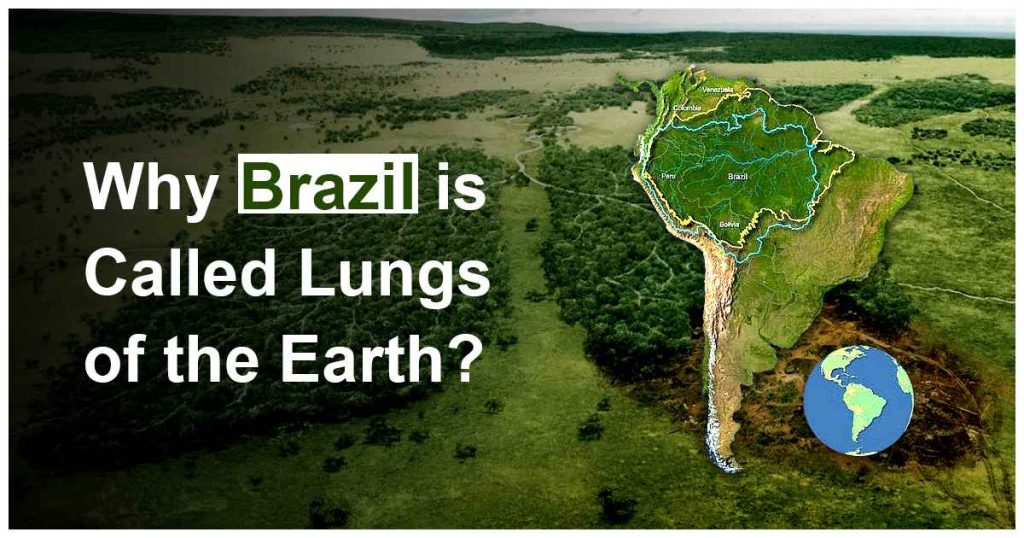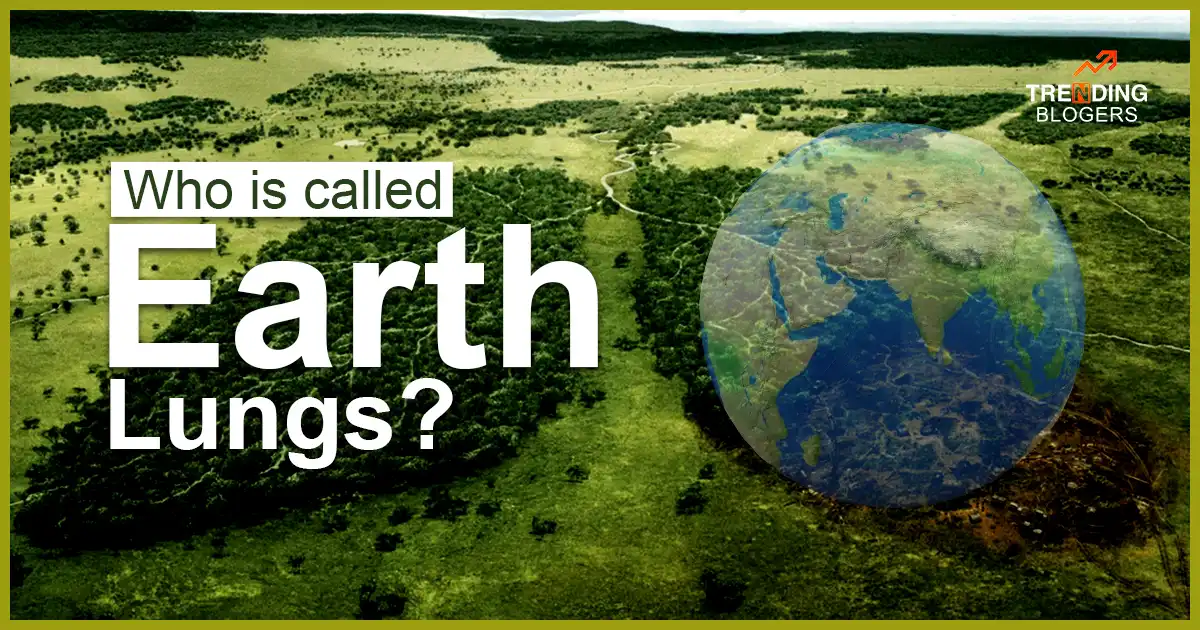Let us start by understanding the function of the lungs in the human body to help you learn who is called Earth Lungs. Lungs are the human body organs that play a crucial role in the respiratory process. Thousands of tiny sacs are present in the lungs, where the exchange of gasses takes place. But does this mean the Earth also has a pair of lungs that help it breathe? No, in an actual sense, it refers to “forest”. Yes, Earth’s forest! Primarily–the Amazon rainforest. We’ll understand why they are called the Earth Lungs?
Who is Called Earth Lungs?
People call the Amazon rainforest the Earth Lungs because of its dense greenery. Plants, trees, shrubs, and more have green leaves containing chlorophyll, an essential pigment required for exchanging gases in plants.
Humans depend on plants for oxygen and food. The leaves of the plants give out oxygen, which humans require to breathe and produce energy. Forests cover about 31% of Earth, contributing to the development of oxygen in the air. The Amazon rainforest alone makes up about 20% of Earth’s total oxygen. This fact is interesting enough to keep us exploring more about the Amazon rainforest or Amazonia.
About Amazon Rainforest
- The Amazon rainforest is considered the world’s largest tropical rainforest. People also call it the Amazon Jungle or Amazonia.
- Over nine countries have the Amazon rainforest, namely:-
- Brazil
- Colombia
- Peru
- Ecuador
- Bolivia
- Venezuela
- Guyana
- Suriname
- French Guiana
- It is 5.5 million square kilometres of huge land, which is 17 times that of the UK and Ireland combined.
- The forest, apart from calling Earth lungs homes:-
- 10% of the world’s known species
- 350 ethnic groups
- An estimated 390 billion trees
- A dense variety of plant and animal life
- The Amazon rainforest also has the Shiringa tree, also known as the Rubber Tree. It is the native tree of the Amazon basin, commonly found in Brazil, Venezuela, Ecuador, Colombia, Bolivia, and Peru.
- The Amazon rainforest is such a beautiful piece of nature, but deforestation threatens it. The condition is as serious as 17% of the forest has already been lost in the last 50 years.
WWF-UK report says that an area of Amazon rainforests equal to 5 football pitches is cut down every minute.
Why is the Amazon Rainforest Known as Earth Lungs?
The Amazon Rainforest is a place of a dense variety of different species of plants and animals. People call it “lungs of the earth” because it generates about 20% of the world’s oxygen alone. Not only this, but it removes a large amount of Carbon Dioxide Co2 from the air.
The Amazon rainforest is an important part of the Earth’s natural ecosystem. There are thousands of unknown species, still wandering in the depths of the jungle. Thus, it is, biologically, the most diverse place on Earth.
Role of the Amazon Rainforest in Earth’s Oxygen Cycle
People call the Amazon Rainforest the “Earth lungs” because it replenishes the air oxygen and draws Carbon Dioxide.
The Amazon rainforest’s billions of trees absorb tons of carbon dioxide every year. This slows down climate change and cools the temperature during the hot summer season.
NOTE: The level of Carbon Dioxide is increasing each year because of burning fuels and rapid deforestation.
The Amazon River System
- The Evergreen Amazon rainforest also has the largest river system in the world.
- The Amazon River is the second-largest river by area and the first-largest by volume.
- Its tributaries include the Japurá, Juruá, Madeira, Negro, Purus, and Xingu rivers.
The rivers, along with their tributaries, make up the Amazon river basin.
Some facts about the Amazon Rainforest
The Amazon Rainforest is a place full of exploration and admirable facts. Given that, here are some things that you should know about it apart from being the “Earth lungs.”
- Size: The Amazon is the largest rainforest on the Earth, spreading to 9 countries in South America.
- Biodiversity: Biologically, the Amazon is very diverse. It has about 3 million fauna species and 2500 tree species.
- Insects: There are over 2.5 million insect species in the Amazon rainforest, and more than half of them live in the canopies.
- Birds: There are over 1,300 species of birds in the Amazon evergreen rainforest. Out of this number, 30 are endemic.
- Air purifier: Along with being the Earth lungs, the Amazon evergreen rainforest is the natural air purifier. The billion number of trees and rich vegetation take greenhouse gasses such as Carbon Dioxide from the air and release oxygen in its place.
- Medicine: The forest is also a source of medicinal herbs and roots, which indigenous communities have used for thousands of years.
- Sahara Desert: The African Sahara Desert also has a major hand in sustaining the Amazon rainforest. The eroded soil from the deserts helps maintain soil amounts in the forest.
- Deforestation: Almost everybody should be aware of the harmful causes of Deforestation to the Amazon rainforest. Human activities have already destroyed 20% of the forest.
Why is Brazil Alternatively Called the Earth Lungs?

- Brazil is sometimes or alternatively called the “Earth Lungs” because of a large part of the Amazon Rainforest covering its land.
- The Brazilian rainforest absorbs a large amount of Carbon Dioxide and produces a lot of fresh oxygen.
- The Shiringa tree, also known as the Rubber Tree, is found in huge numbers in Brazil’s Amazon rainforest.
- Brazilian rainforest produces about 9 percent of the world’s total oxygen and absorbs approximately 25% of the total carbon dioxide.
- The dense evergreen rainforest in the Northern part of Brazil makes the environment cleaner and full of fresh air.
The final line
The Amazon is the largest rainforest on the Earth. Billions of trees, insects, and animal species wander the lands of the Amazon forest. People call it the Earth Lungs because it produces about 20% of the Earth’s oxygen alone and absorbs greenhouse gases, such as Carbon Dioxide.
You must also know that it plays a good part in regulating the climate by keeping the air clean and cool during the summers. However, recent human activities have started to affect the forest with activities such as fuel combustion, deforestation, and more.




